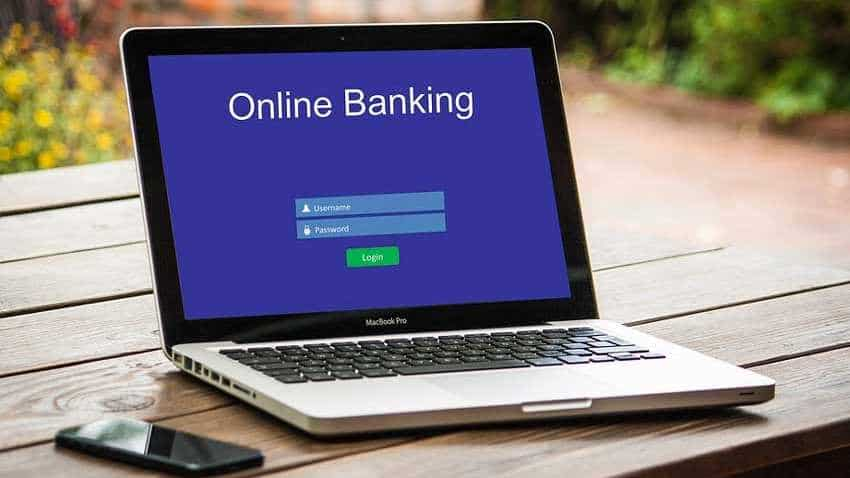Netbanking user? Don't lose money in Phishing attack, know how to be safe
A method using which a fraudster tries to steal your personal and financial information through legitimate-looking emails is called Phishing.

Digital banking has changed the lives of people by providing most facilities online. Now, if you use net banking, you don't need to visit your bank to send money to someone or issue a new cheque book or change your ATM pin. You can do these as well as many other things on your mobile, laptop or computer, sitting comfortably at home or even if you are on the way. Since most net banking users have their email ID linked to the bank, they get transaction and other related information on the mail as well as on the mobile number. Hackers are also well aware of this fact and use Emails to con people. A method using which a fraudster tries to steal your personal and financial information through legitimate-looking emails is called Phishing.
How does bank Phishing work?
The Phishing mail contains a link to a fraudulent web page similar to your bank's website and logo and could request you for details such as passwords, PIN, OTP, CVV, etc. They may use the email to give you some lucrative offers provoking you to enter your details on the fraud website. Fraudsters often pose as bank officials and send emails to customers from fake email IDs similar to those of the bank. These IDs have very minute differences from the original bank IDs. Scammers may use the name of the person's bank, or some other fake email id using a trusted name to send the mail.
The mail informs the consumer that his/her account has been blocked or has some customised offer. These mails will request the clients to send in their personal information such as credit card information, PIN numbers, and bank account information. Scammers also ask the bank customers to click and follow a link that leads to another website, wherein, they can enter their information and resolve the issue. A note of urgency is prevalent in the tone of the fraudulent email.
Once a customer falls in this trap and provides sensitive information, he/she lose their hard earned money.
How to be safe from a Phishing attack?
To be safe from a Phishing attack, you need to be alert and identify a few signs visible in the mail. Keep in mind these points to stay safe:
* A fake website and email may be riddled with grammatical errors and fake branding.
* Try to memorise your bank's website URL like onlinesbi.com is the official website of State Bank of India for its netbanking users. On the other hand, a fake website's URL may be like sbionline.com or onlinesbi.co.in.
* Always check whether the website URL starts with 'https'.
* Do remember that your bank or even income tax department never ask for confidential information like PIN and passwords.
* You should not click on any suspicious links received on your email.
* Do not click on any unexpected or suspicious emails and messages.
* Do not access your account or use your Credit card or Debit card from computers in public places.
Also, if you have accidentally shared your confidential data with anyone, you must get your net banking passwords changed immediately. If you have lost money, immediately inform your bank and registered an FIR.
Get Latest Business News, Stock Market Updates and Videos; Check your tax outgo through Income Tax Calculator and save money through our Personal Finance coverage. Check Business Breaking News Live on Zee Business Twitter and Facebook. Subscribe on YouTube.
RECOMMENDED STORIES

IPL Auction 2025 Free Live Streaming: When and where to watch Indian Premier League 2025 mega auction live online, on TV, Mobile Apps, and Laptop?

SIP vs PPF: How much corpus you can build in 15 years by investing Rs 1.5 lakh per year? Understand through calculations

SBI Senior Citizen Latest FD Rates: What senior citizens can get on Rs 7 lakh, Rs 14 lakh, and Rs 21 lakh investments in Amrit Vrishti, 1-, 3-, and 5-year fixed deposits
06:06 PM IST








 Beware! You can lose your money to online frauds! Stay safe, just do this
Beware! You can lose your money to online frauds! Stay safe, just do this SBI Net Banking by onlinesbi.com: Very important! Keep money safe - Check DOs and DON'Ts
SBI Net Banking by onlinesbi.com: Very important! Keep money safe - Check DOs and DON'Ts  Beware! Save your money - Know 7 ways cyber thugs may make you poor
Beware! Save your money - Know 7 ways cyber thugs may make you poor Paytm clocks 5.5 billion transactions in FY19: Cards, UPI payments drive growth for digital platform - What's next?
Paytm clocks 5.5 billion transactions in FY19: Cards, UPI payments drive growth for digital platform - What's next? Want to open a net banking account? This is what is mandatory for you
Want to open a net banking account? This is what is mandatory for you